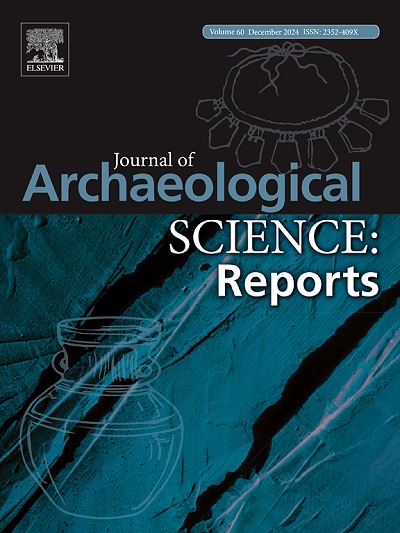安那托利亚西部上门德斯盆地Eksi Höyük新石器时代陶器:对原材料来源和制造过程的考古调查
IF 1.5
2区 历史学
0 ARCHAEOLOGY
引用次数: 0
摘要
本研究首次对来自ek本文章由计算机程序翻译,如有差异,请以英文原文为准。
Neolithic pottery from Eksi Höyük in the Upper Menderes Basin in western Anatolia: An archaeometric investigation of raw material sourcing and manufacturing processes
This study presents the first archaeometric investigation of Neolithic ceramics from Ekşi Höyük, a key early farming settlement in the Upper Menderes Basin, western Anatolia, dated to the second quarter of the 7th millennium BCE, with the main objective of understanding the raw material procurement strategies and technological practices of early Neolithic societies in the region. A multi-method analytical approach—combining petrographic thin-section analysis, X-ray powder diffraction (XRPD), and scanning electron microscopy (SEM)—was applied to 56 ceramic sherds from the site and 16 reference clay samples collected from the surrounding areas.
The results reveal that the Neolithic potters at Ekşi Höyük utilized multiple locally available clay sources with different clay properties, including metamorphic-derived clays and fine-grained basin deposits. Four distinct fabric groups were identified, reflecting varying clay selection strategies. Mineralogical and microstructural analyses revealed firing temperatures ranging from moderate (750–800 °C) to remarkably high (up to 900–1000 °C) in a single case—representing one of the earliest indications of such advanced pyrotechnological practice in Neolithic western Anatolia. These results demonstrate the increasing complexity of resource management, technological practices, and the emergence of craft specialization by the 6th millennium BCE within the early community at Ekşi Höyük.
求助全文
通过发布文献求助,成功后即可免费获取论文全文。
去求助
来源期刊

Journal of Archaeological Science-Reports
ARCHAEOLOGY-
CiteScore
3.10
自引率
12.50%
发文量
405
期刊介绍:
Journal of Archaeological Science: Reports is aimed at archaeologists and scientists engaged with the application of scientific techniques and methodologies to all areas of archaeology. The journal focuses on the results of the application of scientific methods to archaeological problems and debates. It will provide a forum for reviews and scientific debate of issues in scientific archaeology and their impact in the wider subject. Journal of Archaeological Science: Reports will publish papers of excellent archaeological science, with regional or wider interest. This will include case studies, reviews and short papers where an established scientific technique sheds light on archaeological questions and debates.
 求助内容:
求助内容: 应助结果提醒方式:
应助结果提醒方式:


